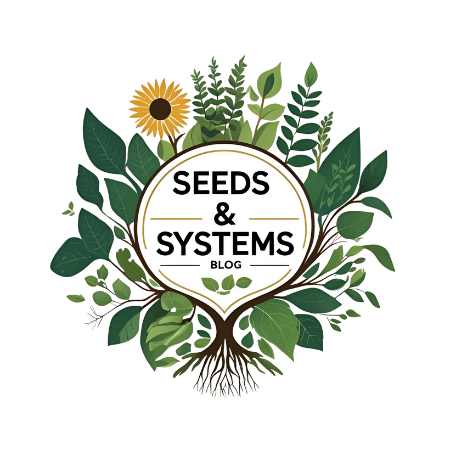Smoke, Signals, and Seedlings: A Visit to Hayfork Bally

Over the weekend, we joined the Trinity County Amateur Radio Club for a picnic and mixer atop Hayfork Bally, a 6,000-foot peak that overlooks the rugged heart of Trinity County. It was a crystal-clear summer day. From the summit, we could see for miles, all the way to Mount Lassen, its snow-dusted peak rising in the distance.
Inside the Lookout: Analog Tools for a Changing Climate
Hayfork Bally has been used as a lookout point since at least 1920. At the top sits a still-active fire lookout tower, staffed by the U.S. Forest Service. I had the chance to speak with the lookout on duty, a practiced observer of smoke, storms, and subtle shifts in the landscape. He gave me a tour of their operations and showed me how to use the Osborne Fire Finder, a classic yet effective tool for pinpointing the direction of smoke sightings. It’s essentially an alidade (sighting ruler) mounted on a topographic map. You rotate the sighting mechanism, line it up with the smoke, and radio in the coordinates. It’s analog, precise, and still an essential part of early fire detection.
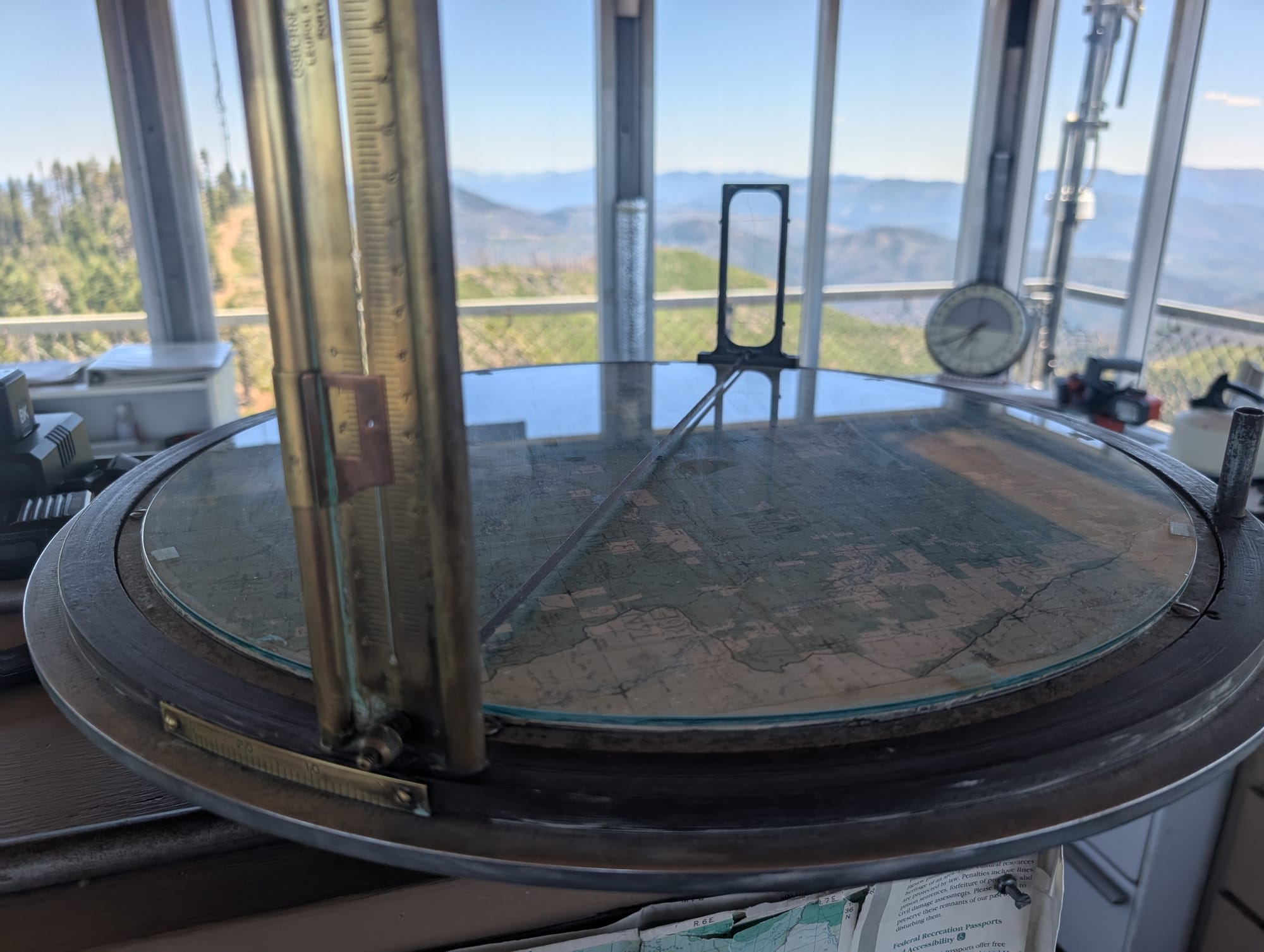
Bally Infrastructure: Solar, Signals, and Community Resilience
Nearby, a cluster of structures supports the mountain’s modern role as a communications hub. Solar arrays power a small building packed with radio repeaters and crowned with antennas. This gear supports both agency communications and amateur radio operations.
In many parts of Trinity County, cell service is limited or nonexistent. Before satellite internet became widespread, people relied on landlines, radio, and even handwritten mail to stay in touch. And despite modern infrastructure, the region’s rugged terrain still blocks signals in many places. Connectivity remains patchy, and in an emergency, radio is often the most reliable link, whether to the outside world or just to your neighbor across the valley.
Radio infrastructure often gets overlooked, but it is remarkably resilient. During disasters, when phone lines, including landlines, and internet go down, amateur radio can still relay emergency traffic, coordinate supply runs, and share updates across long distances. Repeaters like the ones on this peak extend handheld radios' reach far beyond what line-of-sight would allow.
There are no power lines on the summit. Everything runs off-grid. What really caught my eye were the solar installations, not just one array, but two larger systems and several standalone panels powering individual pieces of equipment. Together, they support both agency and amateur radio systems without relying on combustion-based generators, lowering the risk of fire starts and increasing the overall resilience of this critical communications site.
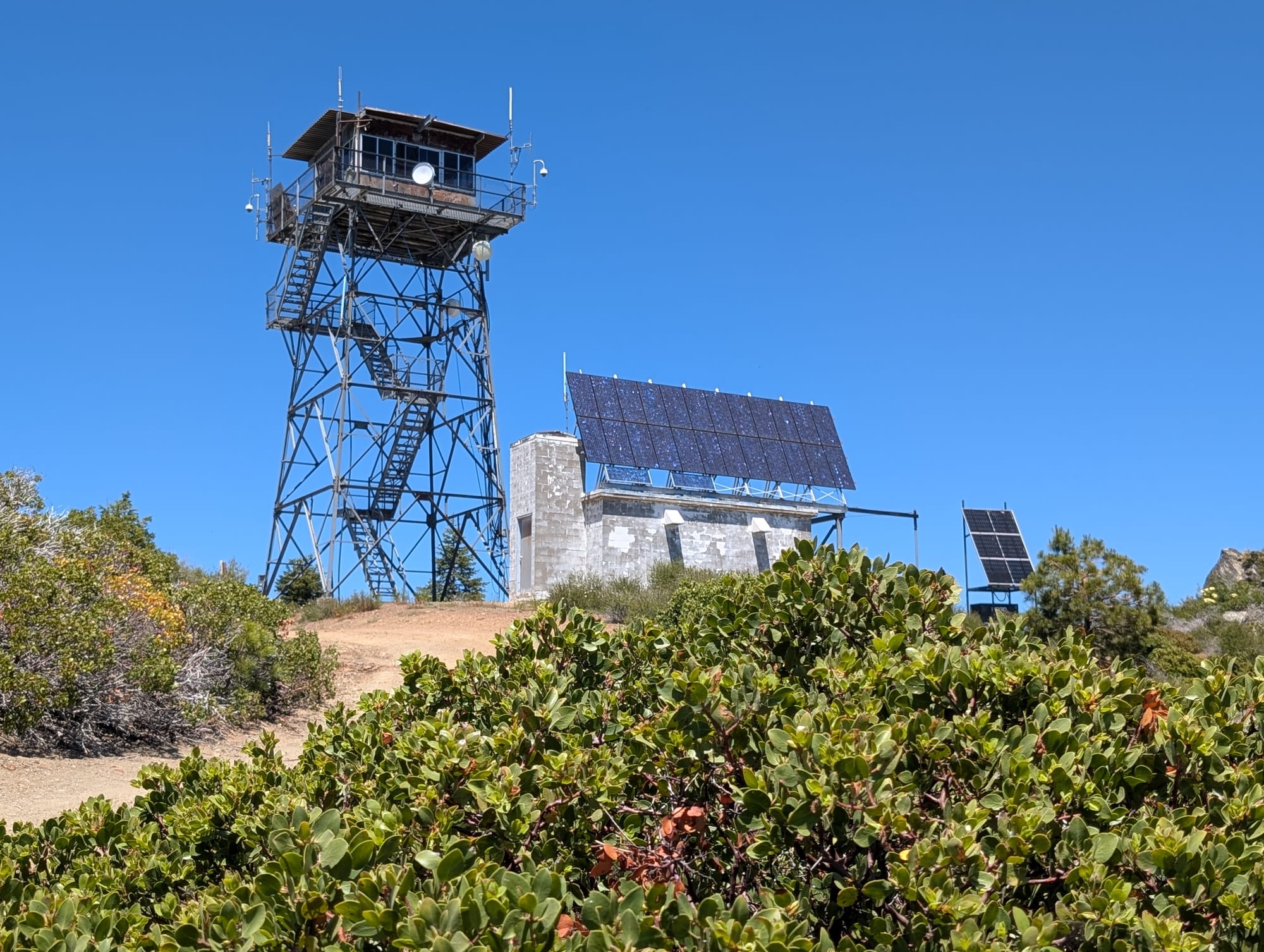
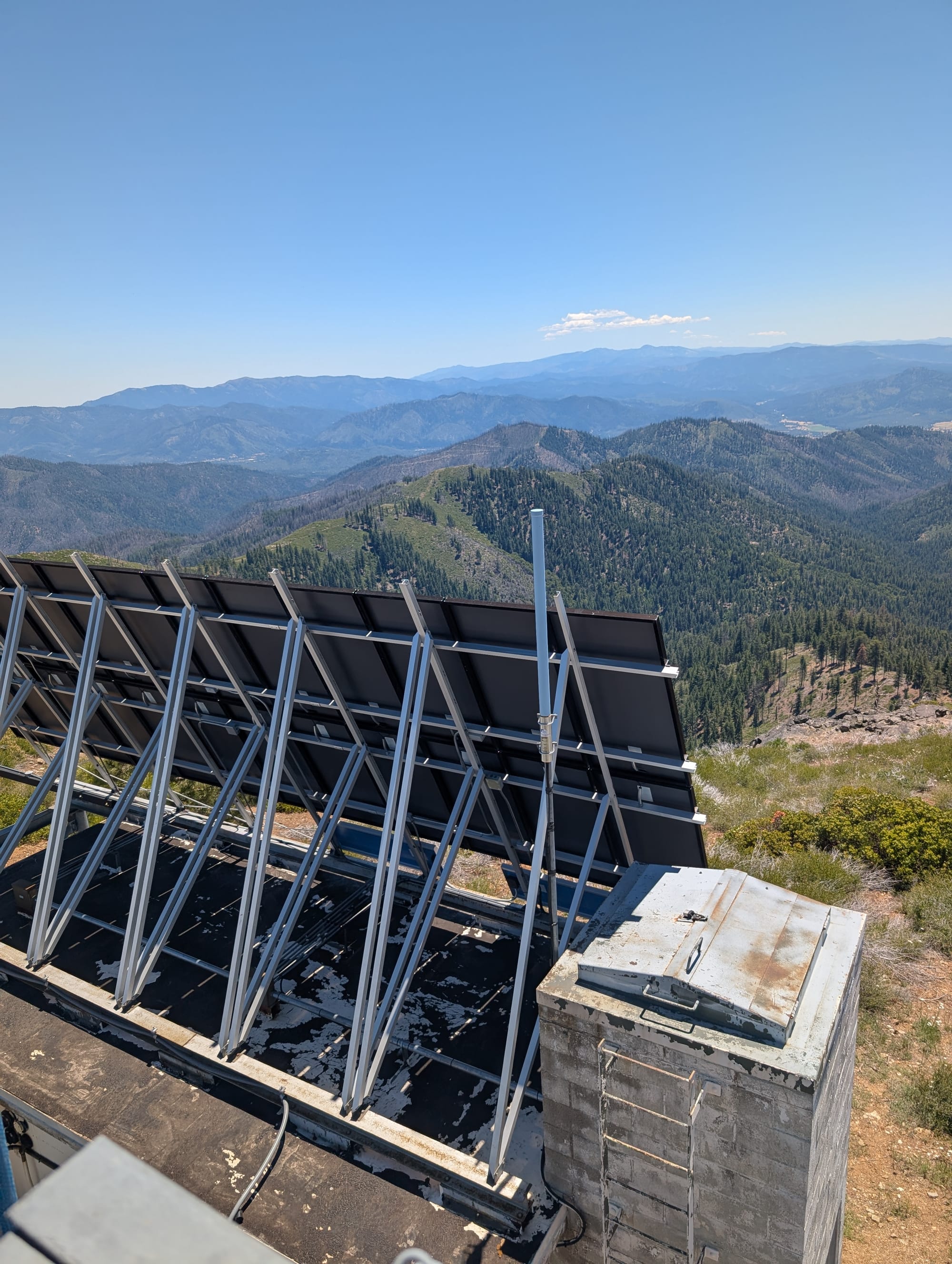
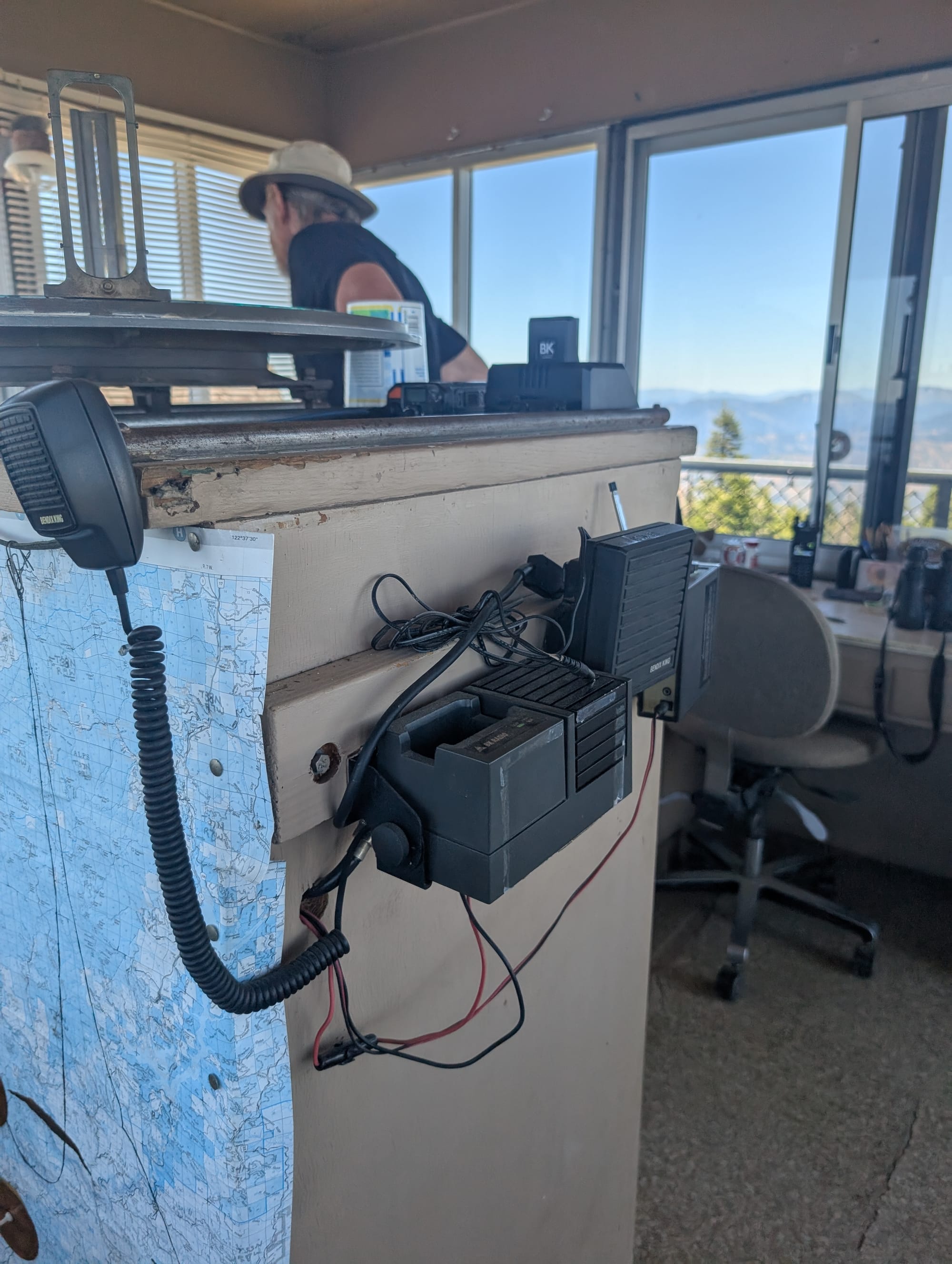

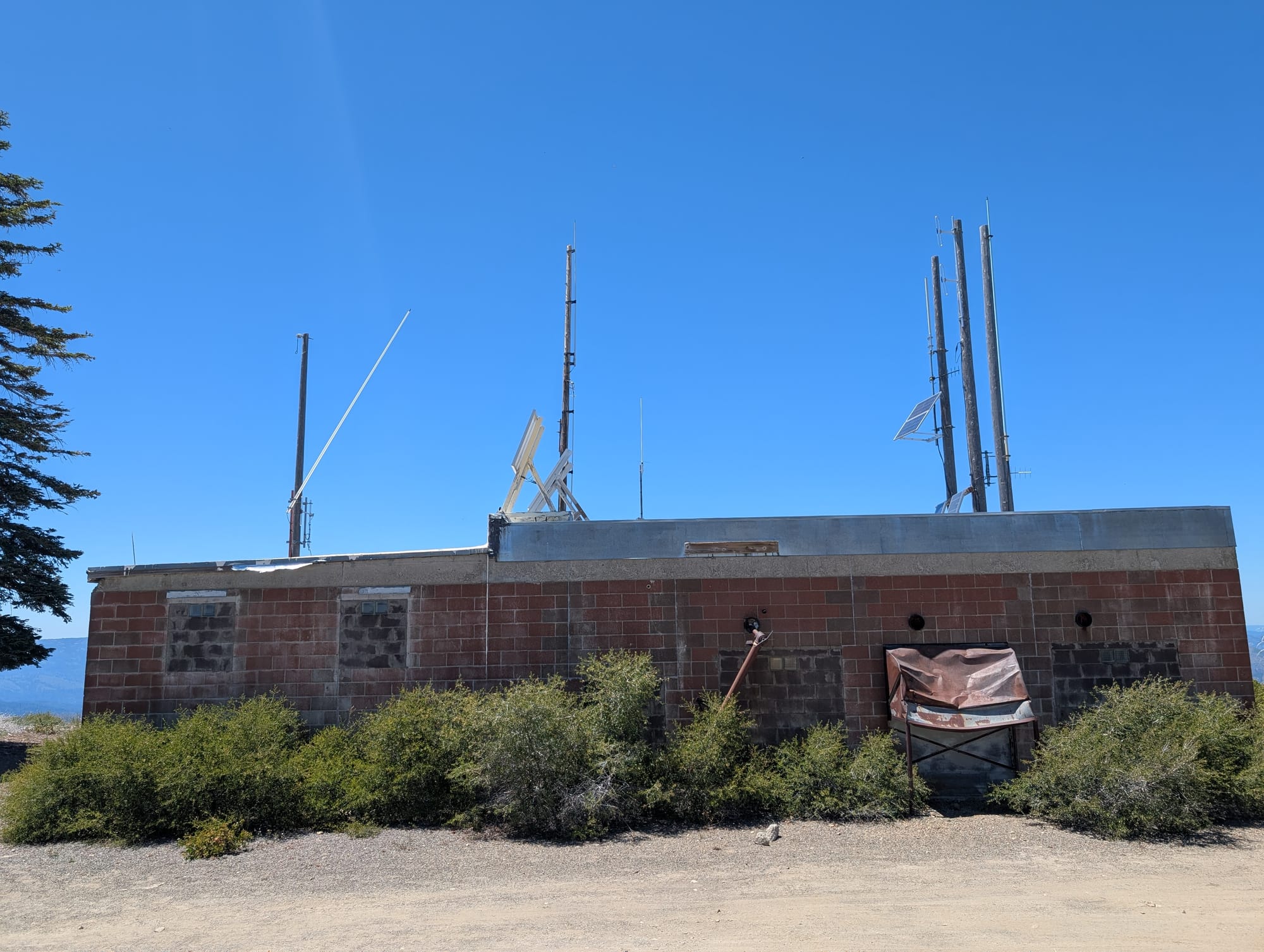
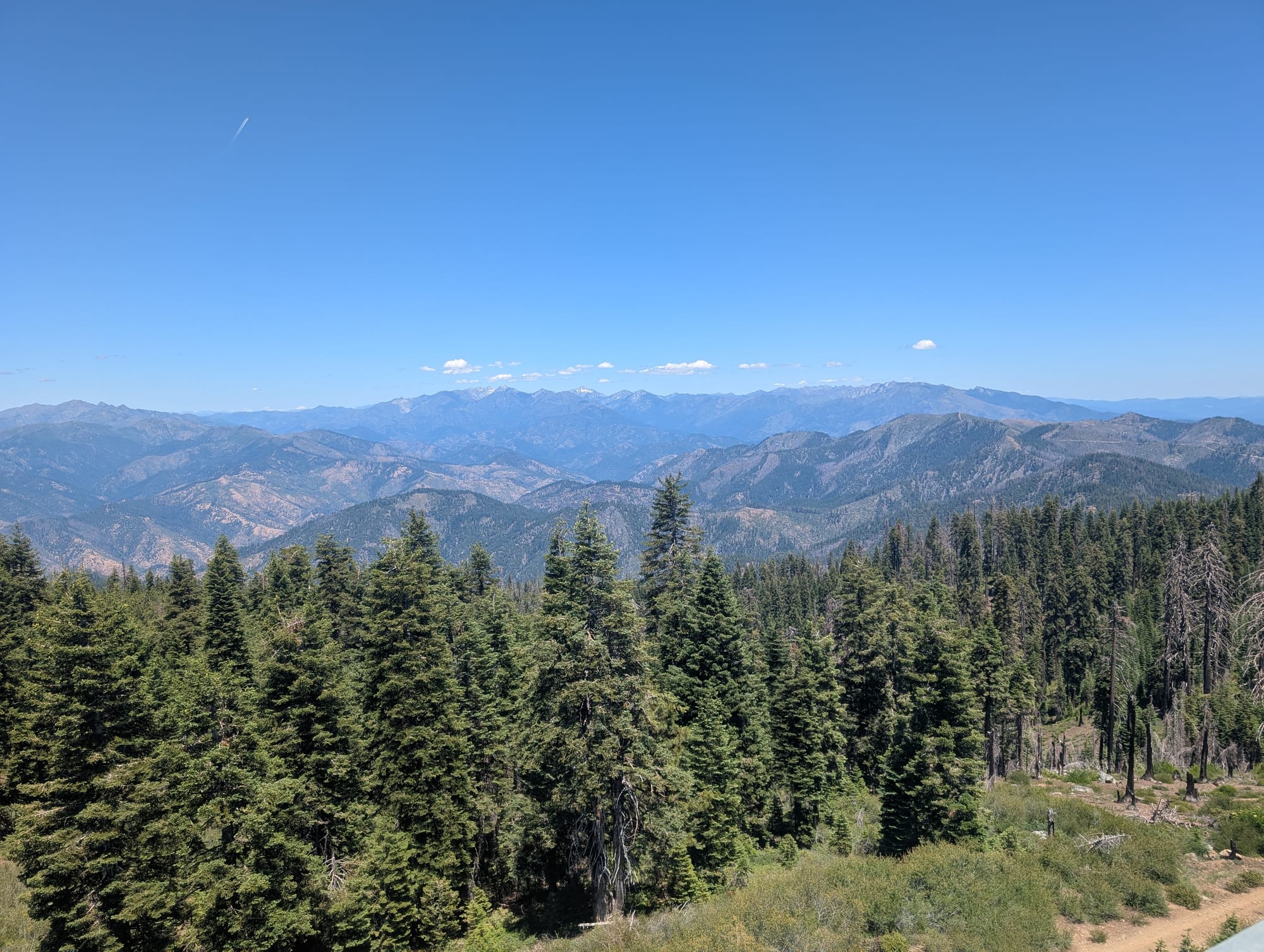
Fire spotting and radio infrastructure on Hayfork Bally, plus a view all the way to Mount Lassen!
Ham Radio as Mutual Aid
I’m a licensed Technician operator myself (Call Sign KK6RVI), though I often feel a little out of place in amateur radio spaces, as a (relatively) young woman and as someone on the cultural and political left. The culture tends to skew older and more conservative. Still, I believe deeply in the liberatory potential of tools like radio. Community-controlled communications are a powerful form of mutual aid. They help us maintain autonomy in a crisis and build bridges across distance, politics, and lived experience.
Radio technology isn’t frozen in time. It’s evolving. Today, amateur radio can be blended with mesh networks, digital modes, and software-defined radios to create decentralized communications that don’t rely on commercial infrastructure. At its best, ham radio isn’t just a backup plan. It’s a living network of people who show up, stay prepared, and care for their communities. Whether you’re chasing distant signals or helping a new operator get their first call sign, it’s always about connection, and connection is survival.
Reading the Land: Layers of Fire and Regrowth
Then there’s the land itself. The scars of the 2022 Monument Fire are still visible across nearby ridges, but healing is underway. I also learned from the lookout that the 2008 Iron Alps Complex Fire came dangerously close to the tower. It burned over 100,000 acres across this rugged terrain, scorching dense timber stands that once covered these slopes.
While the destruction was immense, it also cleared space for new life to return. In this region, fire plays a natural role in ecosystem succession. When thick conifer forests are opened by fire, sunlight reaches the forest floor again. Shrubs and wildflowers quickly establish, some from seeds that lay dormant until smoke or heat triggers them to grow. This early-seral stage is one of the richest for biodiversity. Snags and fallen trees provide habitat, while plants like manzanita, oak, blue elderberry, and penstemon take root. Over time, conifers may return, but the plant community will likely look different than what was here before, shaped by fire, climate, and soil.
In this way, fire becomes both an agent of destruction and a doorway to regeneration. The layers of new growth, ash, memory, and renewal are all visible from the top of Hayfork Bally.
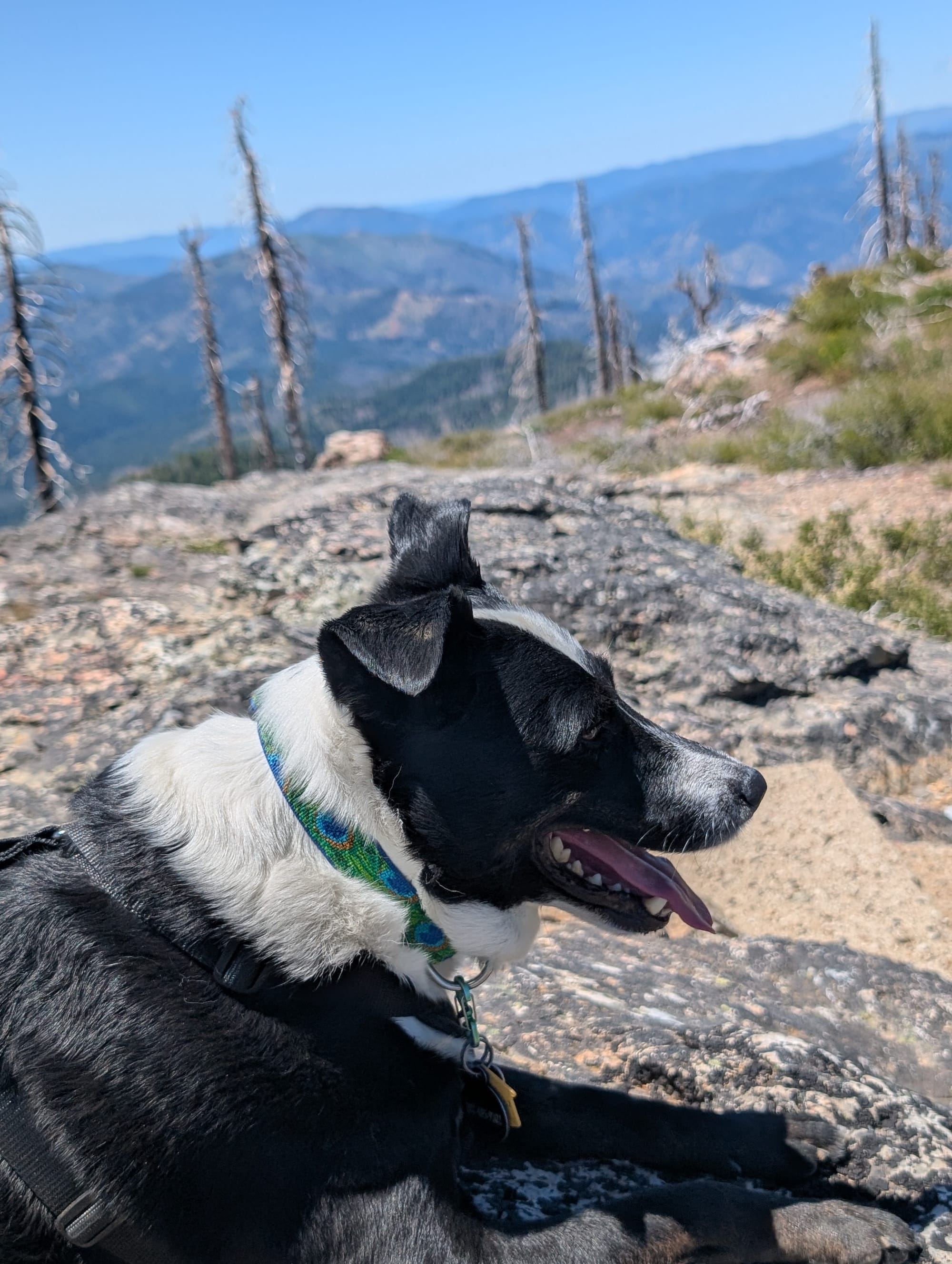
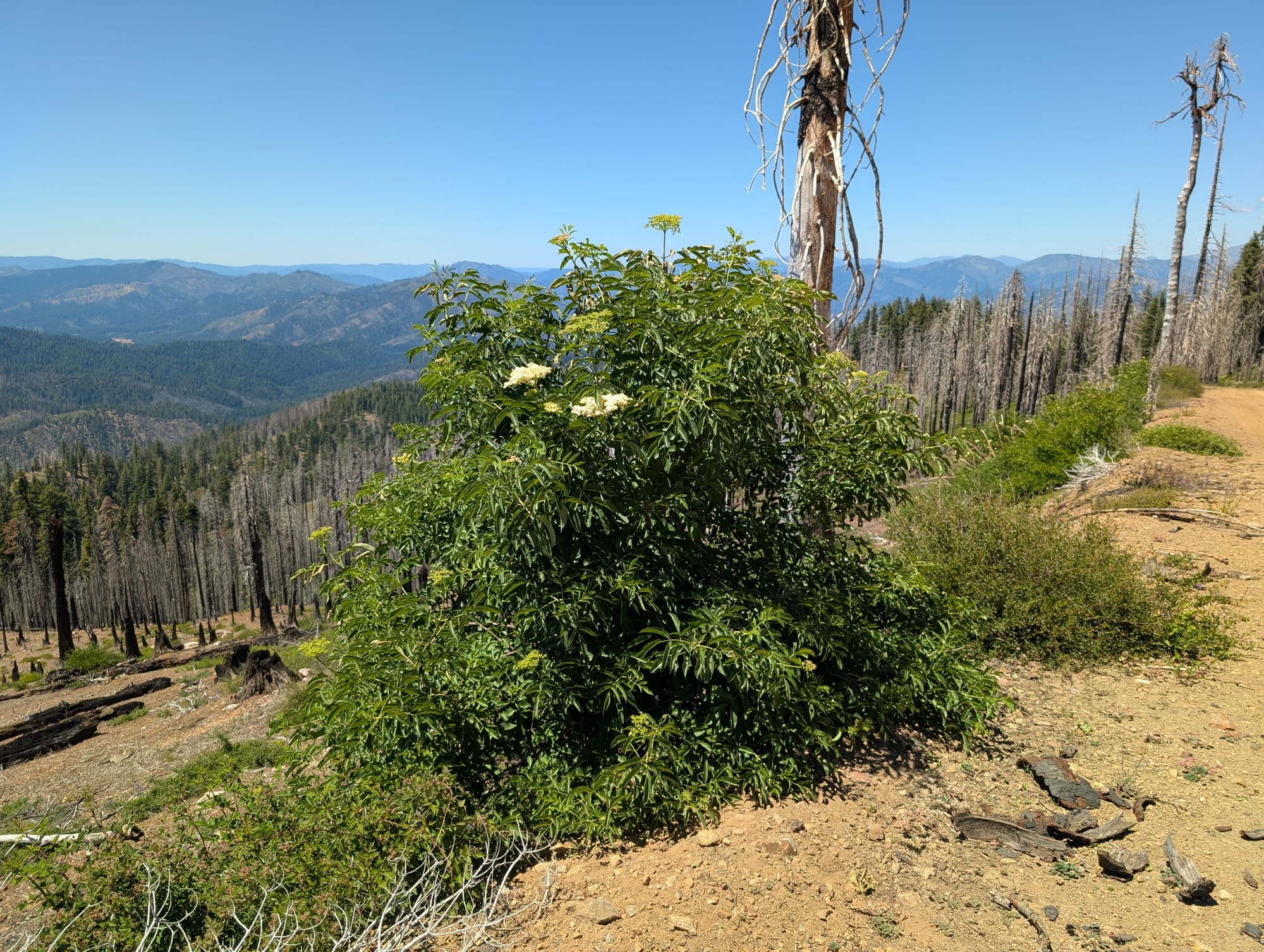
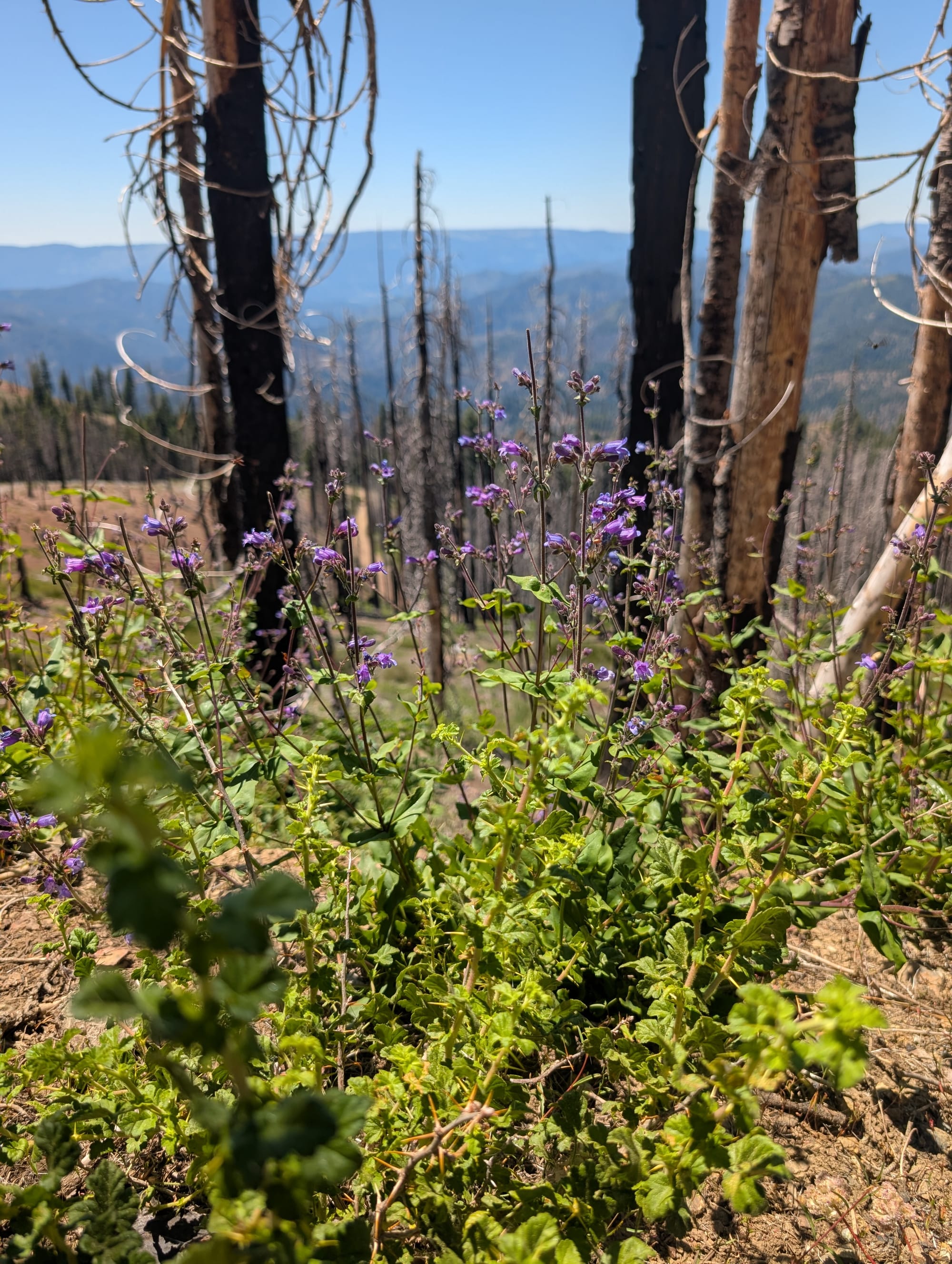
With my dog on the peak, a blue elderberry, and a penstemon (Likely Siskiyou beardtongue), with backdrops of fire snags and rugged terrain.
Lessons from the Peak
From fire detection to solar-powered communications, Hayfork Bally offers a layered story of adaptation and connection across rugged terrain and vast distances. Some tools are decades old. Others are cutting edge. Some are maintained by agencies. Others are supported by volunteers. All of them matter, especially in the face of a warming, more fire-prone future.
Explore Further Want to dive deeper into the tools, seeds, and systems mentioned in this post?
- How to Use an Osborne Fire Finder to Locate Wildfire Smoke from a Fire Lookout
- Forest Fire Lookout Association
- Trinity County Amateur Radio Club
- Getting Licensed as an Amateur Radio Operator (ARRL)
- Northwest Fire Science Consortium: Tools
- CNPS: Wildfire Resilience & Recovery Resources
- CNPS Fire Recovery Guide (PDF)
- Calscape: Search California Native Plants by Location
- Native Land Digital - A global map of Indigenous territories, languages, and treaties.
🌍 Visit my website lizawel.sh to learn more about me and my work.
💬 Want to connect? Follow @seedsandsystems on Instagram or Bluesky.
✉️ Subscribe for posts delivered directly to your inbox.
🔄 Enjoyed the post? Use the buttons up top to share it with others who might find it valuable!
